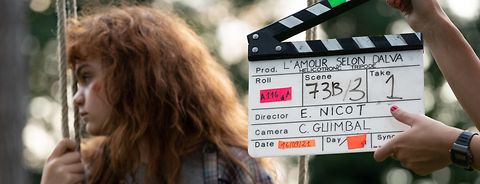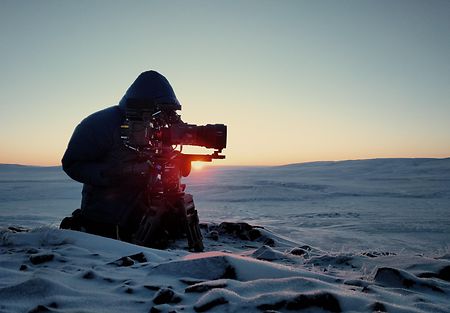Belgian director Emmanuelle Nicot’s feature film “Love According to Dalva” was awarded Best Director’s Debut and Best Cinematographer’s debut at Camerimage 2022. The drama was also competing for the Camera d’Or in Cannes 2022 and won the Louis Roederer Foundation Rising Star Award in the Critic’s Week section the same year. “Love According to Dalva” is a strong film that follows the difficult recovery of a teenager after an incestuous relation. Coming from making documentaries, talented cinematographer Caroline Guimbal shot “Love According to Dalva” on the ALEXA Mini along with ARRI SkyPanels and M-Series lights. In this interview, Guimbal explains her technical and visual choices for this sensitive study of a 12-year-old girl who is a victim of abuse.
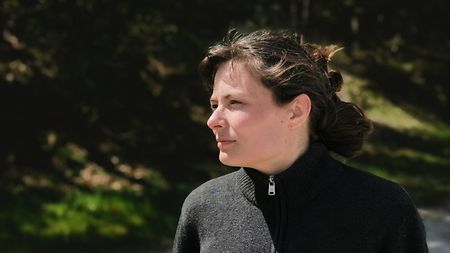
Award-winning “Dalva” was DP Caroline Guimbal’s feature film debut
How did the preparation of “Love According to Dalva” go with the director? What were her expectations for the film’s visual style?
“Love According to Dalva” was Emmanuelle Nicot’s first feature film, but I had already worked with her on two previous short films. We know each other very well, the communication between us is fluid, and we understand each other immediately. Over the years, we have created our own language. With “Love According to Dalva,” Emmanuelle tackled topics that she had already explored in her short films, such as control, denial, friendship. There is a real continuity in her work. For the preparation, we had many meetings with readings of the script. She spoke to me a lot about the character of the protagonist Dalva, particularly her emotional states and psychological evolution. This was our raw material to work on the image and think about the editing.
The whole film is conceived from Dalva’s point of view. We started from what she was experiencing in the moment, what she was feeling, and translated it into images. Emmanuelle’s idea was to be in a sensory relationship with the character. Hence the work on close-ups, to feel close to Dalva, to her skin, but without being impudent. In the first part, when she is placed in a foster home, we worked on her relationship to denial, when she feels hunted down and rejects what is happening to her. This is done through very subtle things, like working on the blur, the frame, with cut-out characters, in order to translate everything she refuses to see. Then, little by little, her gaze changes and opens up as the film progresses. Dalva is starting to look at people and, gradually, accept the outside environment.
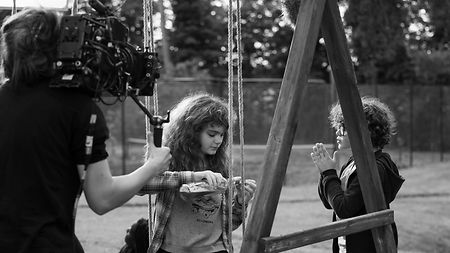
“The idea was to be in a sensory relationship with the character,” says DP Caroline Guimbal
You shot “Love According to Dalva” in 4:3 format. Why did you make this singular choice?
In our reflection with the director, 4:3 format made sense fairly quickly. It was still based on the idea of staying close to Dalva, of focusing on the character. We were more interested in her than in the environment around her. Most of all, we wanted to choose what and what not to show of her surroundings. We wanted to be able to dispense with the room she's in and just focus on her, on her face. Finally, the 4:3 format allowed us to play on the off-screen, which is there, present, but blurred, cut, perceived by the character as an aggression. Dalva is in denial, but she also has this great determination. We followed her from 3/4 face to better express this tenacity, which allows her to hold on, to reject reality, to try to save herself. Her gaze is also transformed in relation to this femininity to which she clings. In the beginning, she looks at female characters only for what makes them women: the hair, the earrings, the objects of femininity. Then, little by little, she widens her glance to the persons as a whole.
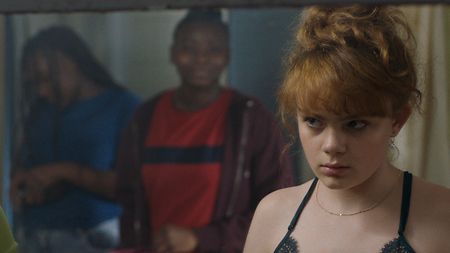
Cinematographer Caroline Guimbal used blur to express the protagonist’s denial of what happened to her
Which camera system did you choose to shoot “Love According to Dalva”?
We would have loved to shoot in 16 mm, like on Emmanuelle’s previous short films. But, as we were mainly working with young non-professional actors, we opted for digital in the end. Once this decision was made, I wanted to use the ALEXA Mini because it’s the camera I prefer. We did not need a larger sensor than the Super 35. I also chose the ALEXA Mini because I was shooting the whole film handheld and I needed a light camera.
As for the lenses, we wanted a vintage look and I did a lot of comparative tests. We liked a lot of lenses, but as we were shooting in natural light, with strong contrasts, I quickly realized that some of them would limit us because of stray flares, especially on the actors’ faces. In the end, I opted for the Zeiss Standard T2.1.

The choice of using 4:3 format for “Dalva” was based on the idea of staying close to the main character
Zelda Samson, the 12-year-old actress who plays Dalva, is amazingly real. How did you approach working on camera with young, non-professional actresses?
It’s a whole relationship that was built with the director and the young actresses over a period of months. For my part, I went to rehearsals with Zelda very early on, to get a feel for how to film her and for her to get used to my presence. It was Zelda’s first time shooting a film, but she quickly managed to ignore the camera. The young actresses were not always on their marks, but the fact of working handheld allowed me to be reactive to any variations. The film was sketched out in advance, but many things emerged on set. We had a basic framework but needed a lot of improvisation around it. That’s the strength of working handheld. I had the option to go by feel, to rely on what the young actresses offered. This was even more important because the director requested a sensory camera that was able to move.
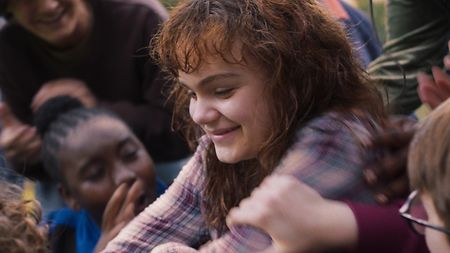
Most of the young actresses played their first role in “Dalva”
The foster home where Dalva is placed plays an important role in the film. How did you work with the lighting?
When she is placed in the foster home, Dalva is in the middle of a very difficult situation, but in a warm environment. Even if, paradoxically, she feels very bad in the foster home, at least in the beginning. Director Emmanuelle Nicot’s idea was not to add gloom to already complicated circumstances. The home is an image from the director’s childhood, since her father is an educator. We chose a very sunny place, contrasting with Dalva’s malaise. I worked with a lot of natural light, adding sunlight inputs with ARRI M-Series lights. Inside, I used more LEDs, with SkyPanels in particular. In a sequence where she runs away and returns to her father’s house at night, I tried to create a more oppressive light, using sodium. Each place in the film has an identity in terms of lighting.

“Each place in the film has an identity in terms of lighting,” says DP Caroline Guimbal
“Love According to Dalva” is your first feature film. Your documentary experience must have been precious to you on set?
Above all, I think that it is a wealth of human experiences. In documentaries, there is this attention to protagonists which is very important, but also a form of freedom, to be able to adapt to the situations. I found this in “Love According to Dalva” as well, even if the crew was more important than in a documentary. At the moment, I have several documentary projects in Brussels, but fiction continues to attract me. Indeed, I think I’m interested in both. I like documentaries a lot, but I feel that fiction allows for different possibilities in developing a character in the image. You can enter a character’s intimacy even more, and I like that.
